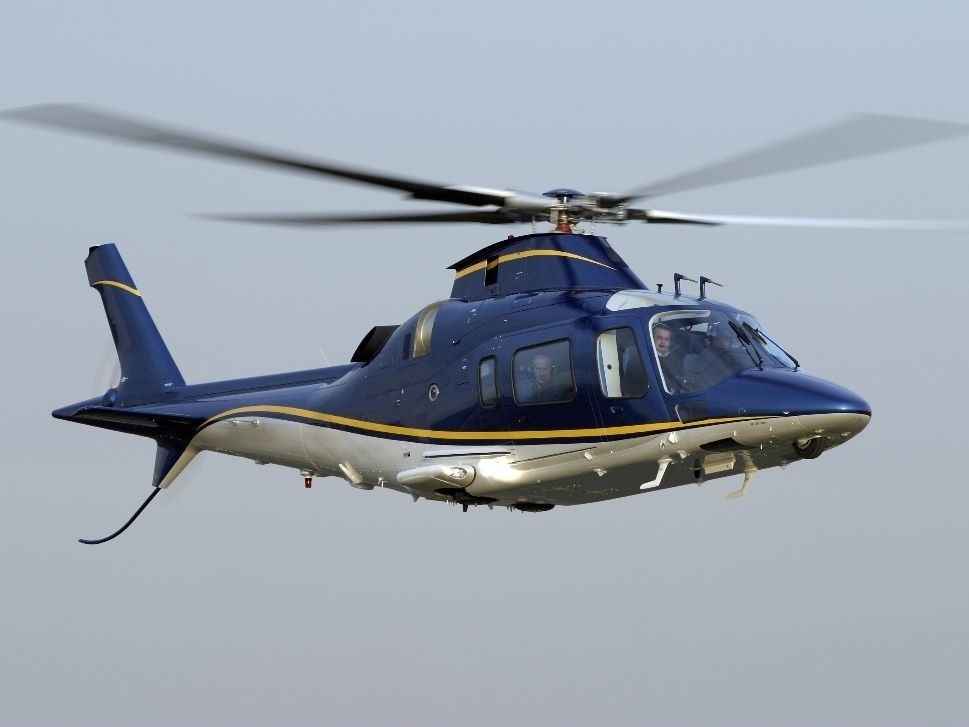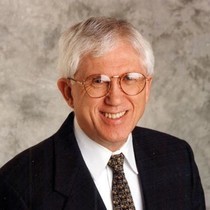- 01 Sep 2018
- Mike Chase
- Helicopter Comparisons
Leonardo AW109E Power vs Bell 429
In this month’s Helicopter Comparison, Mike Chase provides information on a pair of popular light twin turbine helicopters. How does the Leonardo AW109E Power compare with the Bell 429? Learn more here...
Back to Articles
In this month’s Aircraft Comparative Analysis, Mike Chase provides information on a pair of popular light twin turbine helicopters for sale, for the purpose of valuing the Leonardo AW109E Power.
Following, we’ll analyse the performance of the Leonardo AW109E Power and the Bell 429 to see how they compare within the market. We’ll consider productivity parameters (payload, range, speed and cabin size) and current market values.
First, let’s look briefly at the history behind Leonardo. In July 2000 AgustaWestland was formed when British company GKN and Italian company Finmeccanica merged, with each holding a 50% share of their respective helicopter subsidiaries, Agusta and Westland Helicopters.
Then in 2004 Finmeccanica acquired GKN’s stake in AgustaWestland.
In January 2016 Finmeccanica created a wholly-owned company, Leonardo S.p.A. Helicopters, but its aircraft retained their AW model designations.
AW109E Power
The A109 model had been in production from 1996 to 2015, and the AW109E Power is based on the A109K-2 airframe, but offers a wider flight deck and cabin.
Ultimately, the AW109E Power is single-pilot IFR certified, and can be equipped with either Pratt & Whitney PW206C or Turbomeca Arrius 2K-1 engines controlled by a Full Authority Digital Engine Control (FADEC) system.
In total, today there are 372 AW109E Power helicopters in operation worldwide, and 43 have been retired for various reasons.
Europe is home to the largest fleet percentage (30%), followed by North America (24%), Asia (20%) and South America (17%), accounting for a combined 91% of the world’s fleet. The percentage of the fleet currently for sale is 11.8%, and the average days on the market before an AW109E Power sells stands at 523 days, according to JETNET.
Table A shows the Top Eight countries of registration for the AW109E Power fleet. The US accounts for 20% of all operators worldwide. Combined, the top eight countries of registration account for 70% of the worldwide fleet.
Status of ADS-B Out Equipage
Of the 63 AW109E Power helicopters where the based airport is in the US, 34 (54%) have ADS-B Out installed, leaving 46% of the fleet yet to comply. The FAA has mandated that all US-operated helicopters must comply with this new requirement by January 1, 2020.
TABLE A: Leonardo AW109E Power Top Eight Countries of Registration
Payload & Range Comparison
The data contained in Table A is sourced from JETNET. As we have mentioned previously, a potential operator should focus on payload capability as a key factor. The AW109E Power ‘Available Payload with Maximum Fuel’ (1,287 lbs) is greater than that offered by the Bell 429 (882 lbs).
TABLE B: AW109E Power vs Bell 429 Payload & Range Comparison
Cabin and Sections
According to Conklin & de Decker, the AW109E Power’s cabin volume measures 125cu.ft. The Bell 429 has more cabin volume (130cu.ft). Chart A, courtesy of UPCAST JETBOOK, offers a cabin cross-section comparison, showing the AW109E Power has more width (5.3ft vs 5ft) and slightly more height (4.2ft vs 4.1ft) than the Bell 429 cabin. However, the cabin length of the Bell 429 is greater (9.8ft vs 6.89ft).
CHART A: AW109E Power vs Bell 429 Cabin Cross-Section Comparison
The AW109E Power has 34cu.ft of external and 10cu.ft of internal baggage space, while the Bell 429 has no external baggage space, but 50cu.ft of internal baggage space.
The typical seating configuration for both the AW109E Power and Bell 429 is for five seats with two crew members (executive configuration).
Bell 429 Helicopter
Range Comparison
As depicted by Chart B, using Leonardo’s manufacturing plant just outside of Milan, Italy as the origin point, the AW109E Power’s seats full range of 260nm is slightly less than that of the Bell 429 (276nm), according to JETNET.
Note: For helicopters ‘seats full range’ represents the maximum IFR range of the aircraft at long range cruise with all passenger seats occupied. This does not include winds aloft or any other weather-related obstacles.
CHART B: AW109E Power vs Bell 429 Range Comparison
Powerplant Information
The AW109E Power utilizes either a PW206C or Arrius 2K-1 engine, each with the same 716shp transmission rating. (The transmission rating is a limiting factor in the total rated and usable engine power output.) The Bell 429 is powered by a PW207D1 turbine engine with 610shp.
Total Variable Cost
The ‘Total Variable Cost’, sourced from JETNET and illustrated in Chart C, is defined as the Cost of Fuel Expense, Maintenance Labor Expense, Scheduled Parts Expense and Miscellaneous Trip Expense. The Total Variable Cost for the AW109E Power computes at $1,419/hr. This is $391 (38%) higher than the Bell 429’s $1,028/hr. cost.
CHART C: AW109E Power vs Bell 429 Total Variable Cost Comparison
Aircraft Comparisons
Table C contains the used 2012 prices from Vref for each helicopter. The average speed, cabin volume and maximum payload values are from Conklin & de Decker/JETNET, while the number of helicopters in-operation and fleet percentage for sale are as reported by JETNET.
TABLE C: AW109E Power vs Bell 429 Comparison Table
The AW109E Power has 11.8% of its fleet currently for sale, whereas the Bell 429 has 5.5% for sale. The average number of used transactions (sold) per month for the AW109E Power is three units per month compared to the Bell 429 with two units sold per month.
Depreciation Schedule
Helicopters that are owned and operated by businesses are often depreciable for income tax purposes under the Modified Accelerated Cost Recovery System (MACRS). Under MACRS, taxpayers are allowed to accelerate the depreciation of assets by taking a greater percentage of the deductions during the first few years of the applicable recovery period (see Table D).
TABLE D: Part 91 & 135 MACRS Schedule
In certain cases, helicopters may not qualify under the MACRS system and must be depreciated under the less favorable Alternative Depreciation System (ADS) where depreciation is based on a straight-line method, meaning that equal deductions are taken during each year of the applicable recovery period. In most cases, recovery periods under ADS are longer than recovery periods available under MACRS.
There are a variety of factors that taxpayers must consider in determining if a helicopter may be depreciated, and if so, the correct depreciation method and recovery period that should be utilized. For example, helicopters used in charter service (i.e. Part 135) are normally depreciated under MACRS over a seven-year recovery period or under ADS using a twelve-year recovery period.
Helicopters used for qualified business purposes, such as Part 91 business use flights, are generally depreciated under MACRS over a period of five years or by using ADS with a six-year recovery period. There are certain uses of the helicopter, such as non-business flights, that may have an impact on the allowable depreciation deduction available in a given year.
Table E depicts an example of using the MACRS schedule for a 2012 model AW109E Power helicopter in private (Part 91) and charter (Part 135) operations over five- and seven-year periods, assuming a used 2012 retail price of $3.2m (per Vref).
TABLE E: AW109E Power MACRS Depreciation Schedule
Asking Prices & Quantity
The current used helicopter market for the AW109E Power shows a total of 44 helicopters for sale with 21 displaying an asking price ranging from $950k to $2.8m. We also reviewed the 18 used Bell 429 helicopters for sale, which displayed eight asking prices ranging from $4.399m to $6.5m.
While each serial number is unique, the airframe hours and age/condition will cause great variations in price. Of course, the final negotiated price remains to be decided between the seller and buyer before the sale of an aircraft is completed.
Productivity Comparisons
The points in Chart D are centered on the same helicopters. For added measure, we have included the Bell 427. Pricing used in the vertical axis is as published in by Vref for the respective 2012 model aircraft. The productivity index requires further discussion in that the factors used can be somewhat arbitrary. Productivity can be defined (and it is here) as the multiple of three factors:
- Seats Full Range with available fuel;
- The Long Range cruise speed flown to achieve that range;
- The cabin volume available for passengers and amenities.
CHART D: AW109E Power vs Bell 429 Productivity Comparison
Others may choose different parameters, but serious helicopter buyers are usually impressed with Price, Range, Speed and Cabin Size. After consideration of the Price, Range, Speed and Cabin Size, we can conclude that the AW109E Power is competitive in its market.
Based on 2012 model used prices, the Bell 429 shows a higher retail price (+$1.5m) than the AW109E Power, but also offers a slightly larger cabin volume, lower variable hourly operating cost and slightly more range with seats full. However, the AW109E Power offers greater payload with full fuel capability.
The AW109E Power averages three units sold per month and is still a popular model on the used market today. Operators should weigh up their mission requirements and budget precisely when picking which option is the best for them.
Leonardo AW109 Power Cabin
In Summary
Within the preceding paragraphs we have touched upon several of the attributes that helicopter operators value. However, there are other qualities that might factor in a buying decision too.
Our expectations are that the AW109E Power will continue to do well on the used helicopter market for the foreseeable future. Of course, if the AW109E Power helicopter is not outfitted with ADS-B Out it cannot be placed in operation in the US after December 31, 2019 as mandated by the FAA. Buyers must keep this in mind when choosing their next helicopter purchase.
Find the latest Leonardo Helicopters for Sale or visit, Bell Helicopters for Sale
Read More About: Helicopter Ownership
Related Articles
- 30 Jan 2018
- Mike Chase
- Helicopter Comparisons
- 02 Mar 2015
- Mike Chase
- Helicopter Comparisons


